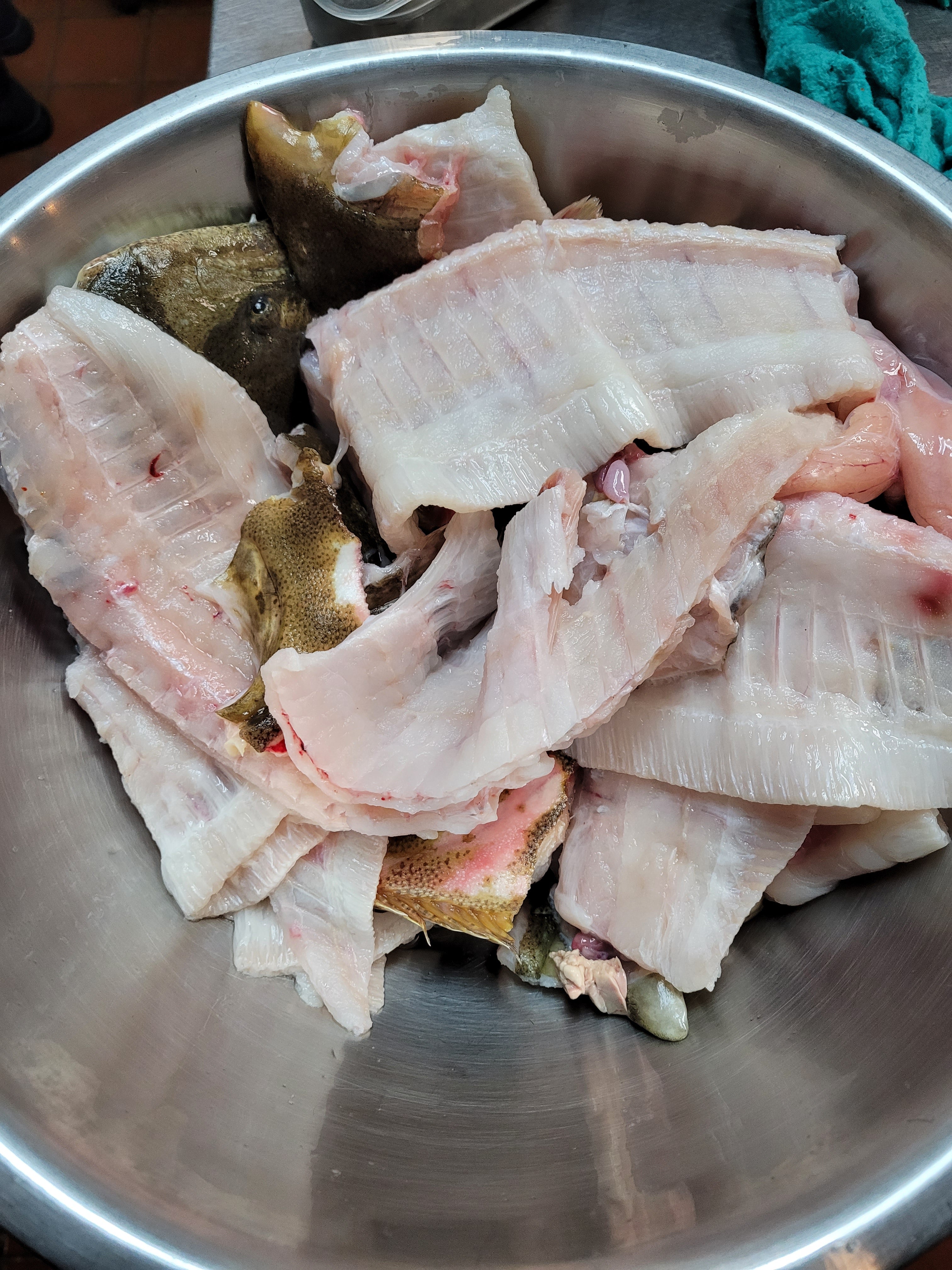Cooking the Off-Cuts of Fish: Cobia Frames & Collars
Eugene L. 04.26.22

So, you’ve spent all that time and money, gone out, and caught your fish. Now you have it home and you got to cook it up, no point in killing something if you’re not going to eat. The usual thing is for you to fillet the fish and toss everything else out, but there’s so much more you can eat on a fish besides those boneless fillets. There are fish collars, the throats, the frame, the roe, and even the whole head.
Yes, they require some work to clean and dress, but if you’re already doing the work to fillet the fish what’s a little more work to utilize most of the fish. First thing off the bat, I’d recommend a heavier knife for cleaning the fish. Something in a breaker or deba style blade, a skinny fillet knife won’t be able to push through the bones around the head or spine. I personally use a stiff 9″ bubba blade, it has enough heft behind it to push through bones, but still can fillet fish easily.
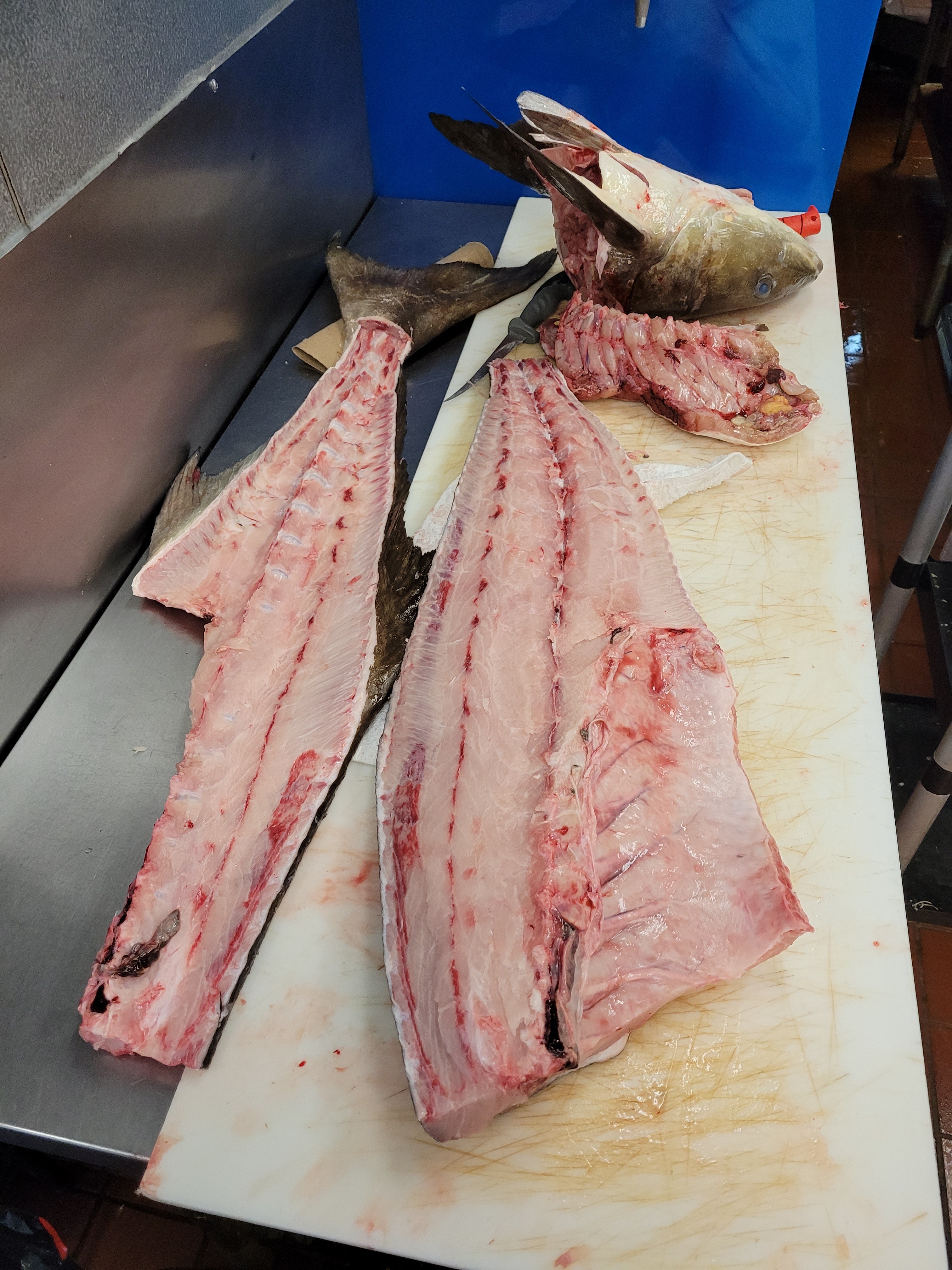
For cleaning fish in general, I recommend gutting it before you fillet fish to keep any GI tract materials from touching the meat. Then taking the head off at the throat and collars to help make the filleting process easier. And then once you have the fillets off the frame, take a knife and trim off the fins and tail. Then, following the spine pop the joints in the backbone with a knife and cut the frame into smaller segments. Then you can bake or fry the frame pieces and eat the meat off the bones.
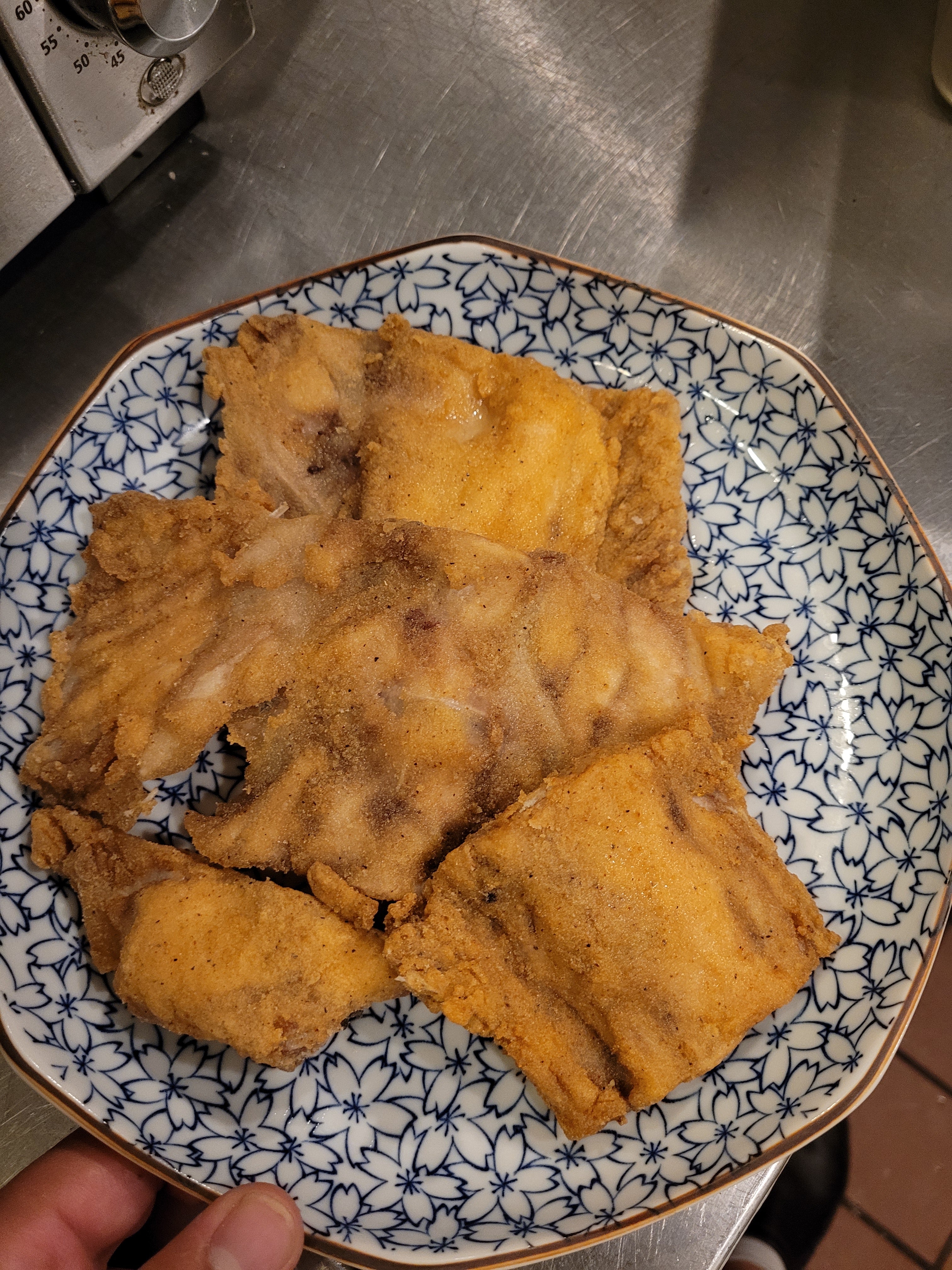
For the fish throats and collars, take the gills out and remove them as a whole off the back of the skull. Then, trim off any of the membranes and bloodlines from the throat and collars. After that, you want to take the skin off the fish collars and throats. You can usually find a seam between the skin and meat where you split the throat of the fish. You can then use skinning pliers or your hands with a paper towel to peel the skin off the collars. Then depending on the size of the fish split the throats from the collars. That way they are more manageable to eat and will cook more evenly.
In this particular case, these collars that came off two cobia weighed over 6lbs, over half of that alone was just meat. Which most of the time will end up feeding the crabs in the marina. Because of their large size, I split the collars into two separate pieces. Then, breaded and fried them for staff dinner at work. Each piece was large enough to be a meal for a person. Same deal with the pieces of frames, just a couple of pieces held enough meat for a person to have a decent meal.
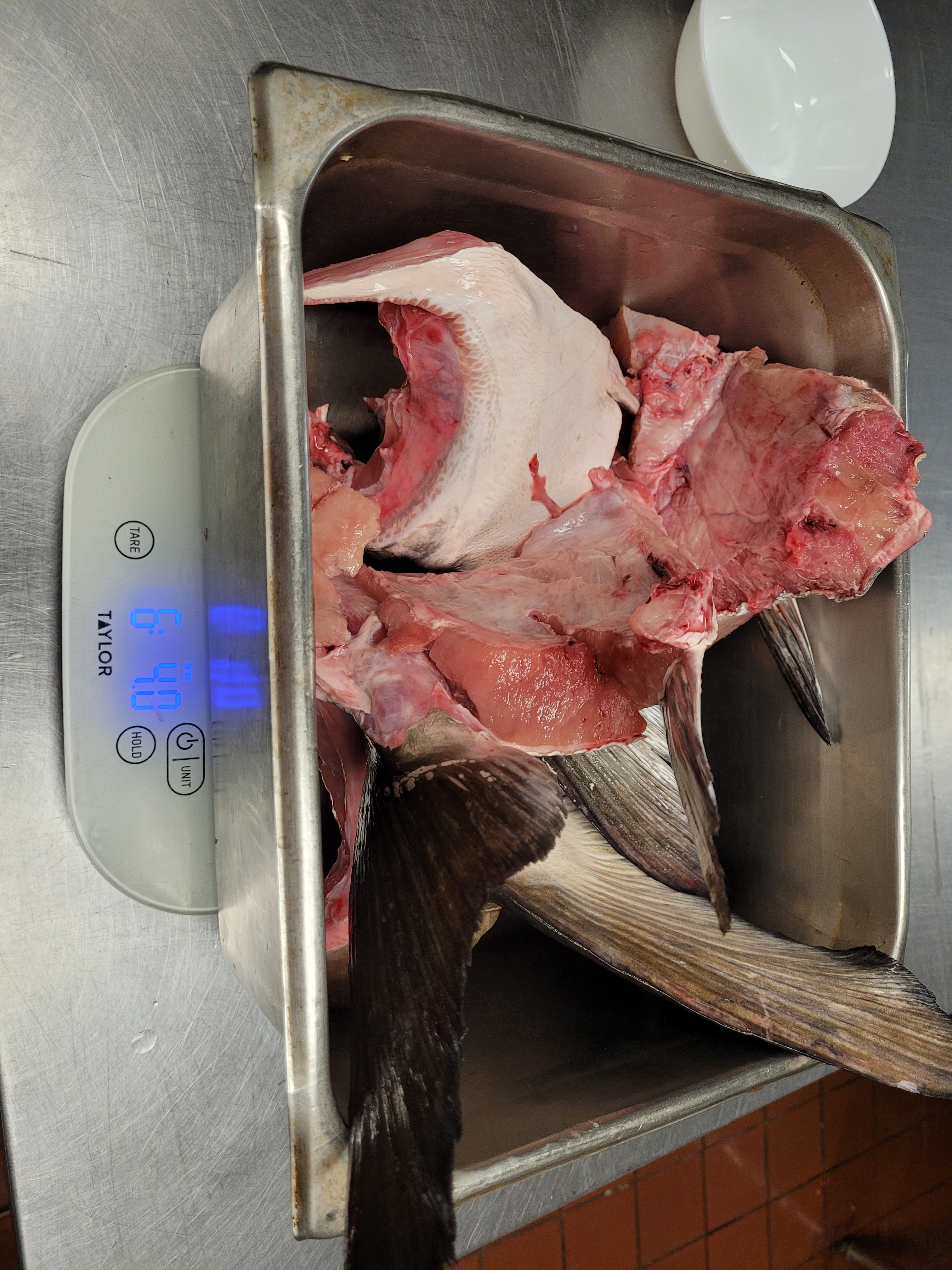
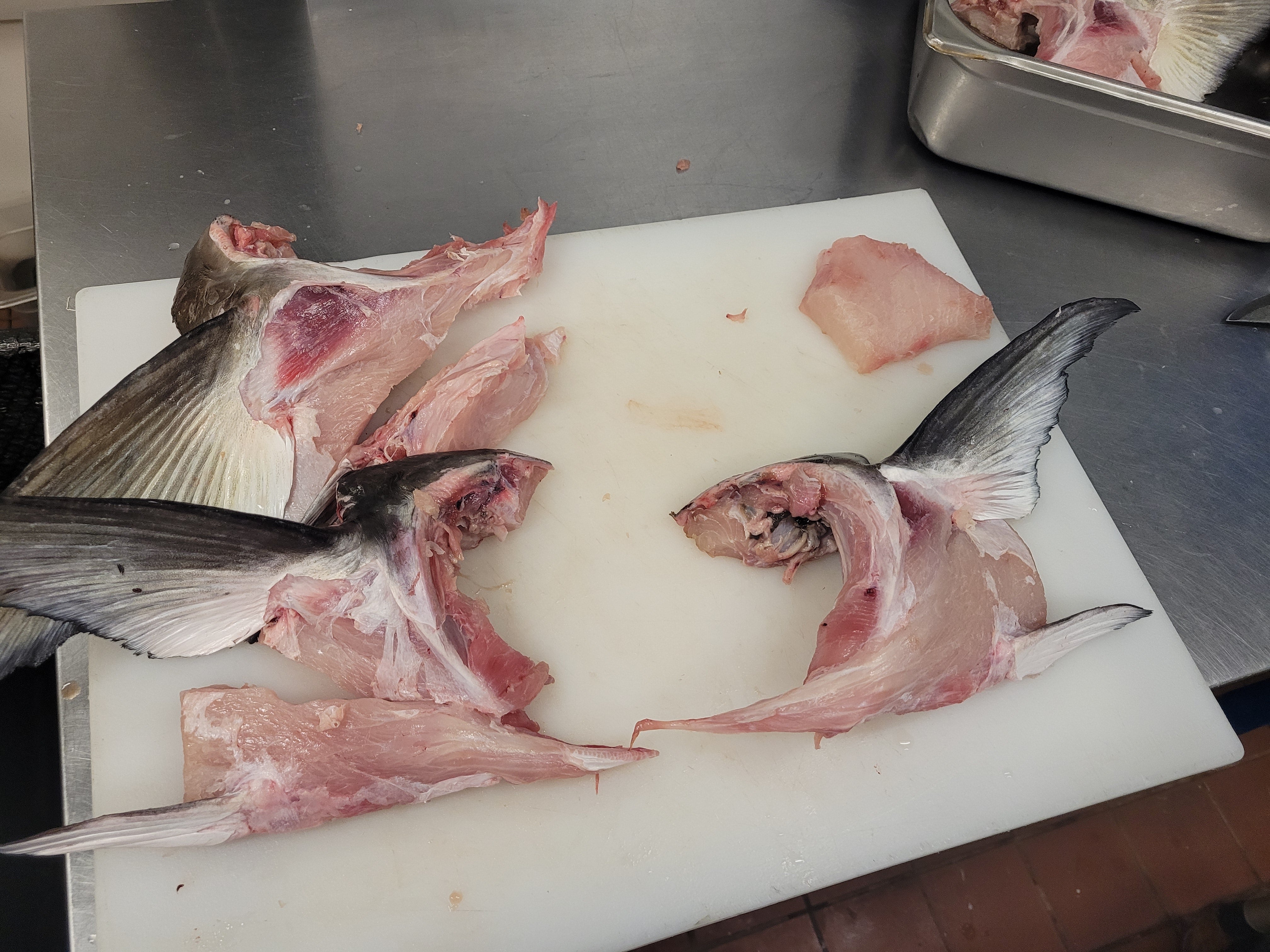
Because I do have access to commercial fryer units, I leave the fins on my collars, but you can trim them if you don’t have space in your fryer or pot. I do recommend frying the fins for most fish, they fry up crispy into a sort of fish cracker. The cobia nuggets from this meal came from the rib cage that I deboned. In this case, I also was able to pull the roe from both fish. While fish roe is not everyone’s cup of tea it is something to consider utilizing. It’s very rich and versatile and in the rest of the world a common food item. In this case, we dusted pieces of roe up in flour and fried it in butter. Then, served potatoes with a brown butter caper sauce.
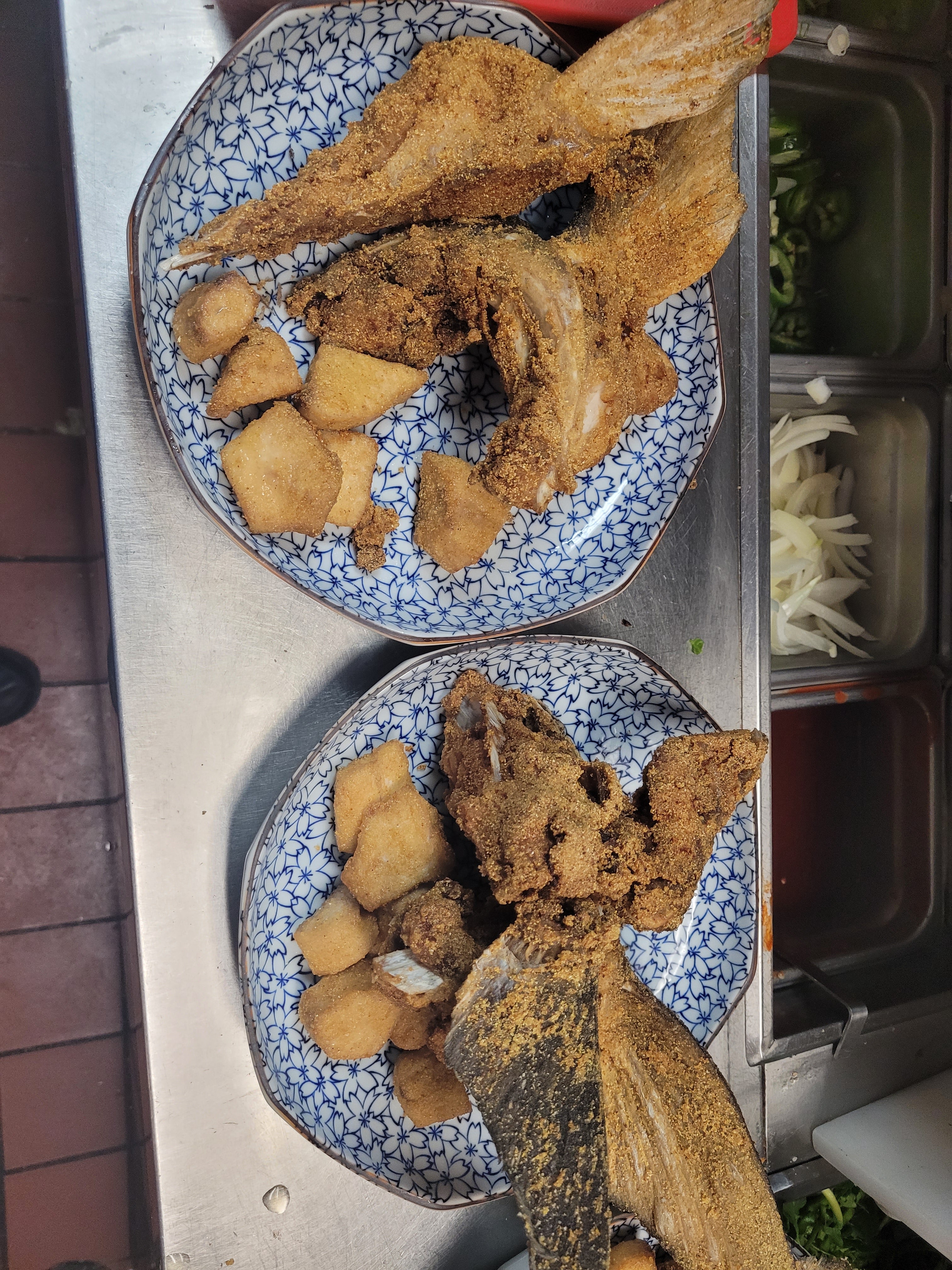
I know that in this article I’m mainly cooking a big cobia which gives me a better return for all this effort. But even with smaller fish, there are ways you can use the offcuts. The bones and heads are excellent for a fish stock after you trim and wash the head and bones. Which you can use in turn to make a nice seafood chowder or cioppino. Or, for the frame of a smaller fish you can leave the fins on and bread and fry the thing whole. The frying will crisp up the fins and bones, and give you a sort of fish chip
